Naval Aviation 9 – Aircraft Carriers
| < RNAS in the Dardanelles | Δ Index |
As well as sea-plane tenders, the Navy also worked on the development of aircraft carriers, the first was HMS Furious.
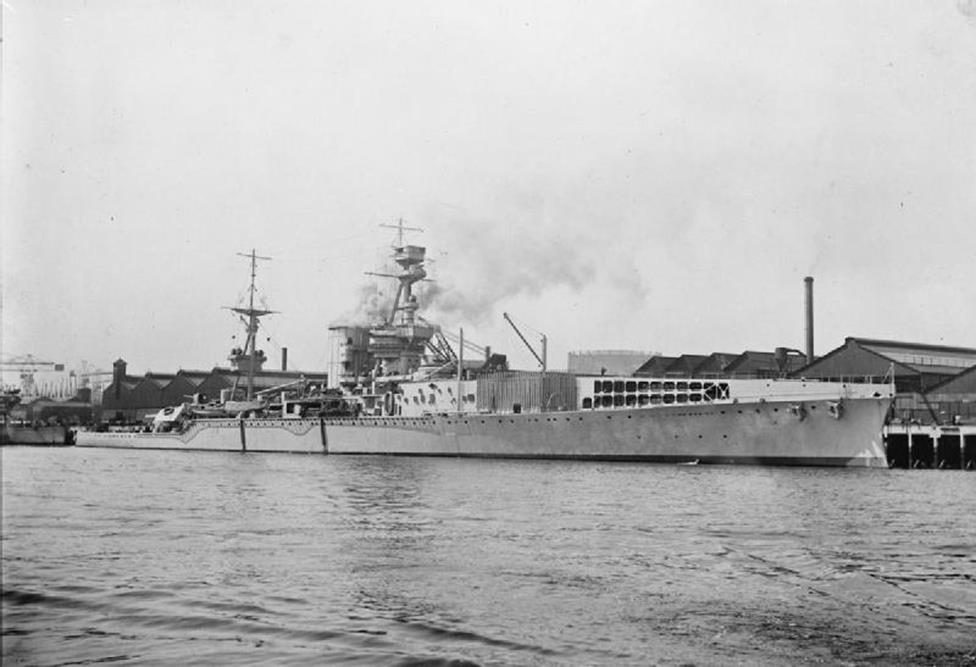 HMS Furious in 1917
HMS Furious in 1917
Originally laid down in 1915 as a large light cruiser mounting two 18 inch (457mm) guns, the largest on any Royal Navy warship. In February 1917 her forward gun was replaced with a flying off deck. In a remarkable event on 2 August 1917 Squadron Commander E.H. Dunning landed his Sopwith Pup on Furious’ flying off deck, the first aircraft to land on a ship.
A few days later Dunning tried again but was killed when his aircraft went over the side.
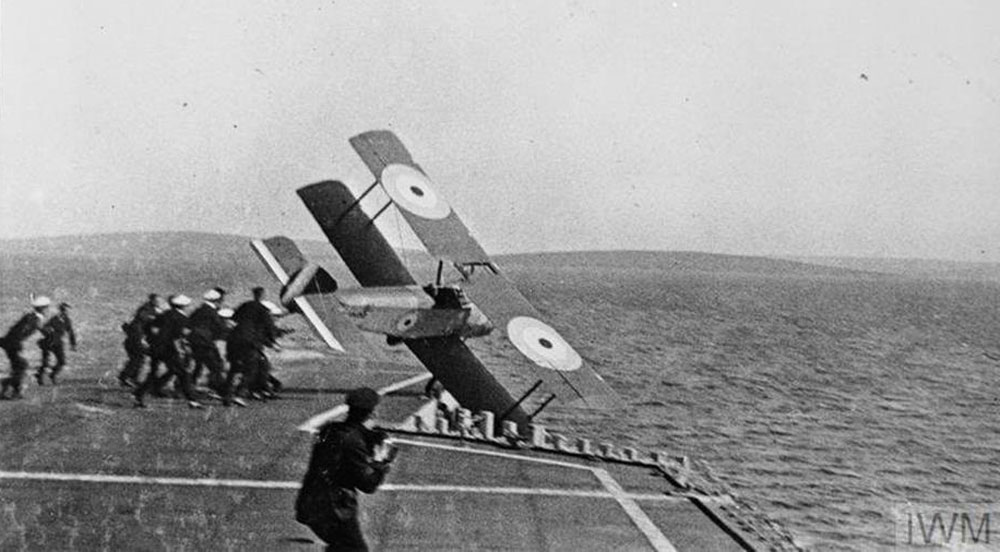
As a result of Dunning’s accident a landing-on deck was built on the stern in late 1917.
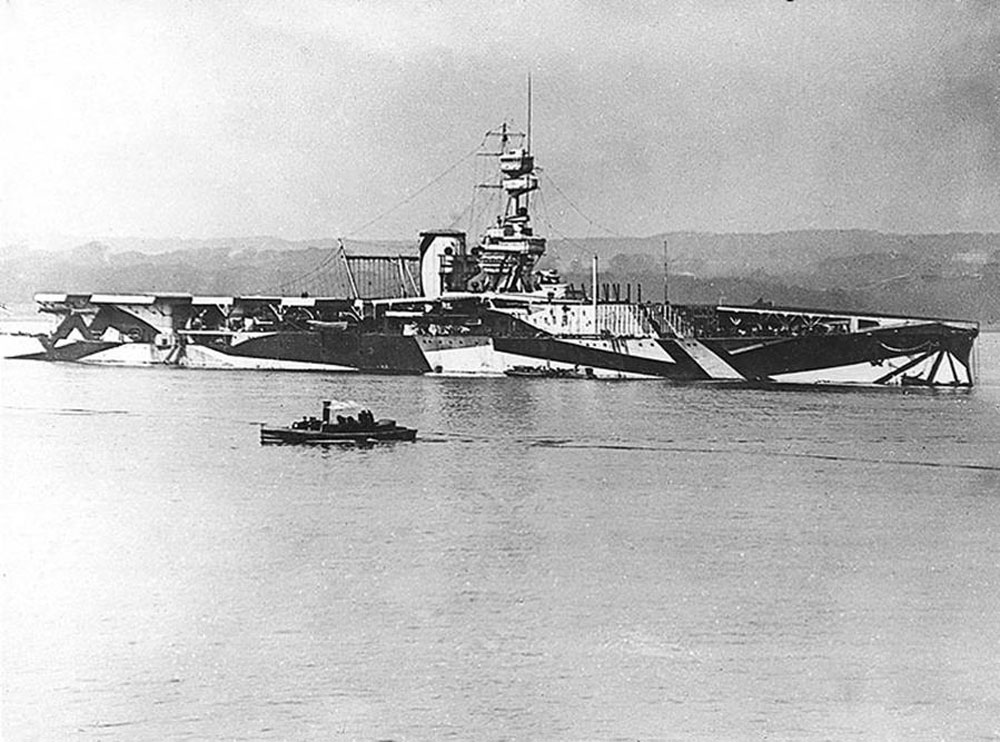 HMS Furious in 1918 with the new aft landing-on deck
HMS Furious in 1918 with the new aft landing-on deck
Furious launched the Tondern raid in July 1918 when seven Sopwith Camel aircraft attacked Zeppelin sheds destroying two airships, the first attack in history made by aircraft flying from a carrier flight deck.
The British conducted no other carrier raids during the war but other raids were being planned.
From 1917 onwards a raid on the German High Seas Fleet was mooted using the new torpedo-carrying Sopwith Cuckoo, but the Cuckoo was not available in sufficient numbers until early 1919 after the surrender of the German High Seas Fleet in November 1918.
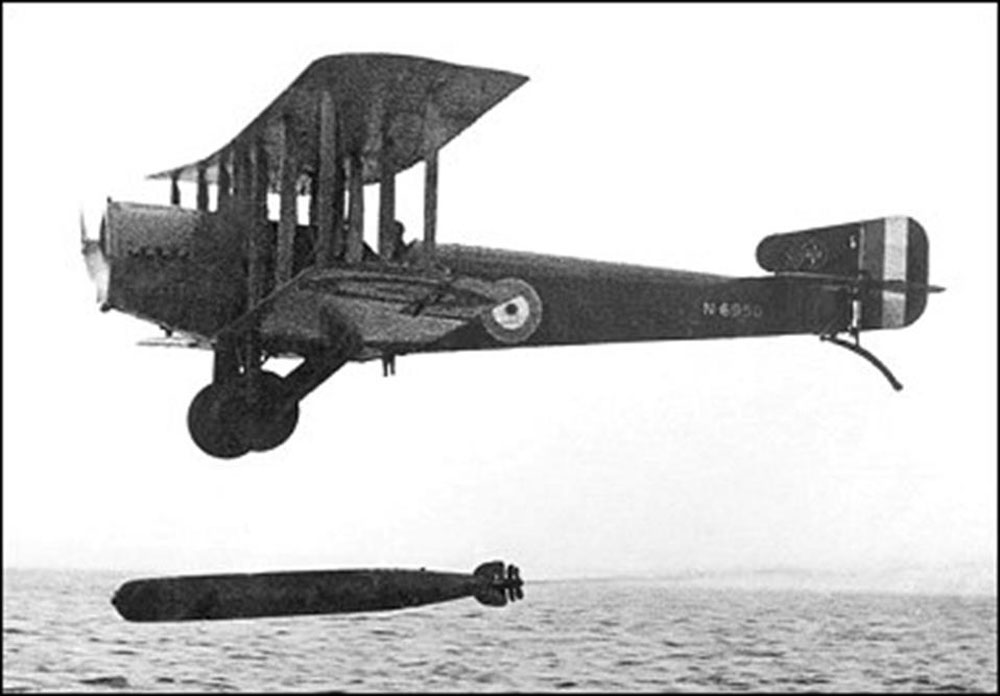 A Sopwith Cuckoo launching a torpedo
A Sopwith Cuckoo launching a torpedo
The limitations of HMS Furious led to the introduction in 1918 of the first flat-top carrier with a full-length flight deck – HMS Argus.
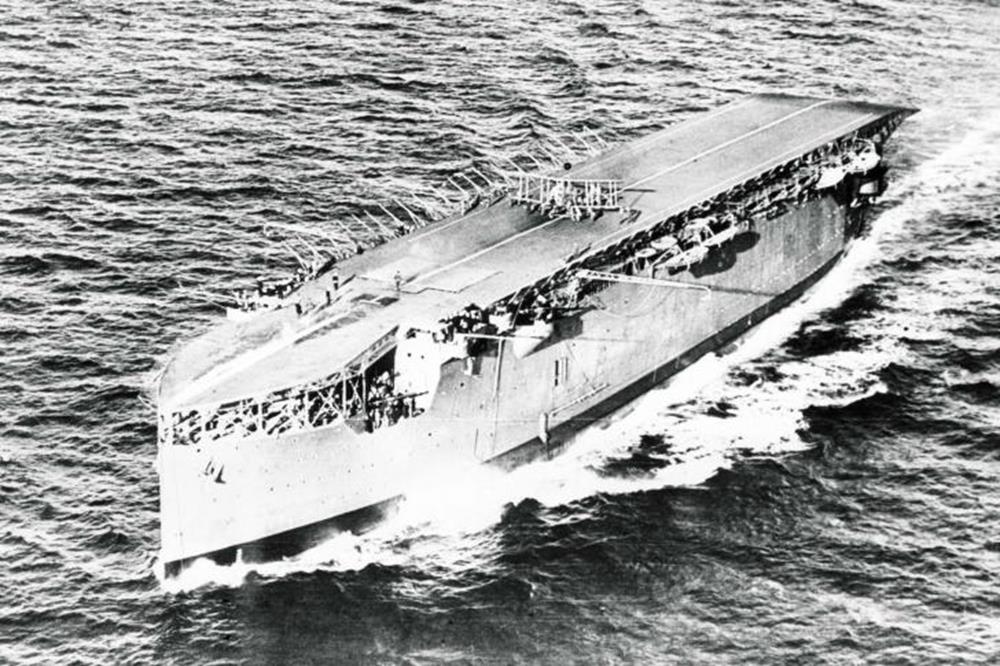 HMS Argus
HMS Argus
In 1916 as the limitations of existing carriers became apparent, the Admiralty sought large, fast hulls suitable for conversion into an aircraft carrier. Construction of the Italian ocean liners Conte Rosso and Giulio Cesare had been suspended by William Beardmore and Company at the outbreak of the war, and both met the Admiralty’s criteria. Conte Rosso was purchased by the Admiralty on 20 September 1916, and Beardmore began work on converting the ship.
The design went through various iterations aimed at deleting turbulence above the flight deck. These led to the deletion of funnels (exhaust gases were ducted aft and exhausted underneath the aft end of the fully-flush flight deck.
She was introduced too late to see service in WWI but was used to test arrestor gear and then as a training ship, and saw active service in WWII.
| < RNAS in the Dardanelles | Δ Index |